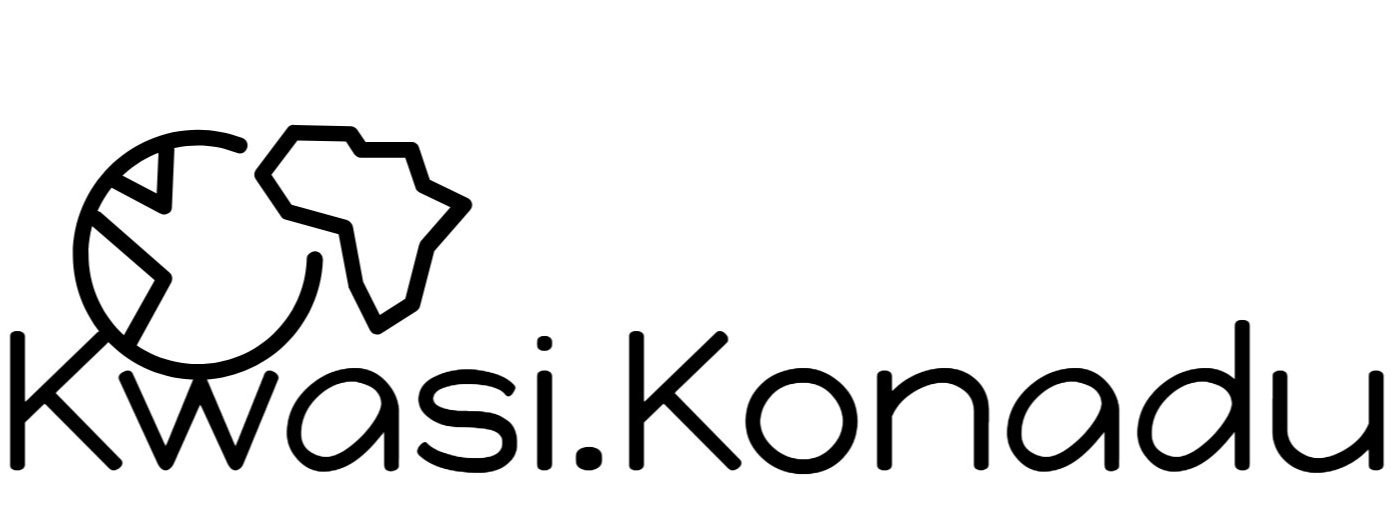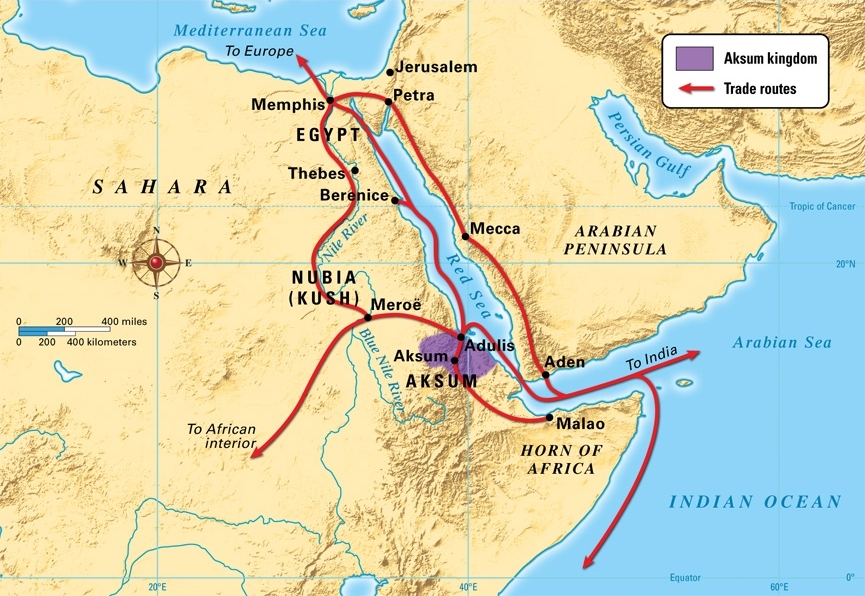The state of Aksum was located in the Ethiopian highlands, where local society developed in the northern end of the central highlands, before gradually moving south. Aksumite society engaged in pastoralism, harvested cereals, coffee and cotton, exploited its iron industry through its major port of Adulis on the Red Sea. Aksum engaged in extensive trade networks across the Mediterranean and Red Sea, and into the Indian Ocean. Aided by its coins minted in gold, silver and copper, Aksum flourished during the collapse of the Roman Empire and even extended its influence in South Arabia with military garrisons in the region. Inscriptions on its coins and steles provide documentation for the rise and decline of Aksum, which rose to prominence in the first century, marked by the beginnings of its overseas trade, and deteriorated in the eighth century, owing to the rise of Islam in the region. For the early history of Aksum and its trade terminus Adulis, we also have external reports, none more important—due to its early description of Adulis—than the Periplus Maris Erythraei (“Voyage around the Red Sea”). The Periplus was composed by an anonymous Greek-speaking Egyptian merchant or sailor around the middle of the first century CE. Designed as a short sailing manual for traders, the author described the maritime trade routes from Egypt to Adulis and down the coast of East Africa.
1. Of the designated ports on the [Red] Sea, and the market towns around it, the first is the Egyptian port of Mussel Harbor [i.e. Myos Hormos]. To those sailing down from that place, on the right hand, after eighteen hundred stadia, there is Berenice. [A stadion (pl., stadia) is about 1 English mile.] The harbors of both are at the boundary of Egypt, and are bays opening from the [Red] Sea.
2. On the right-hand coast next below Berenice is the country of the [foreigners]. Along the shore are the fish-eaters, living in scattered caves in the narrow valleys. Further inland are the [foreigners], and beyond them the wild-flesh-eaters and [shoot or calf]-eaters, each [group] governed by its chief; and behind them, further inland, in the country towards the west, there lies a city called Meroe.
3. Below the [shoot or calf]-eaters there is a little market-town on the shore after sailing about four thousand stadia from Berenice, called Ptolemais of the Hunts, from which the hunters started for the interior under the dynasty of the Ptolemies. This market town has the true land-tortoise in small quantity; it is white and smaller in the shells. And here also is found a little ivory like that of Adulis. But the place has no harbor and is reached only by small boats.
4. Below Ptolemais of the Hunts, at a distance of about three thousand stadia, there is Adulis, a port established by law, lying at the inner end of a bay that runs in toward the south. Before the harbor lies the so-called Mountain Island, about two hundred stadia seaward from the very head of the bay, with the shores of the mainland close to it on both sides. Ships bound for this port now anchor here because of attacks from the land. They used formerly to anchor at the very head of the bay, by an island called Diodorus, close to the shore, which could be reached on foot from the land; by which means the barbarous natives attacked the island. Opposite Mountain Island, on the mainland twenty stadia from shore, lies Adulis, a fair-sized village, from which there is a three-days’ journey to Coloe, an inland town and the first market for ivory. From that place to the city of the people called Auxumites [Aksumites] there is a five days' journey more; to that place all the ivory is brought from the country beyond the Nile through the district called Cyeneum, and thence to Adulis. Practically the whole number of elephants and rhinoceros that are killed live in the places inland, although at rare intervals they are hunted on the seacoast even near Adulis. Before the harbor of that market town, out at sea on the right hand, there [lay] a great many little sandy islands called Alalaei, yielding tortoise-shell, which is brought to market there by the fish-eaters.
5. And about eight hundred stadia beyond there is another very deep bay, with a great mound of sand piled up at the right of the entrance; at the bottom of which the opsian stone is found, and this is the only place where it is produced. These places, from the [shoot or calf]-eaters to the other Berber country, are governed by Zoscales; who is miserly in his ways and always striving for more, but otherwise upright, and [well-versed] with Greek literature.
6. There are imported into these places, undressed cloth made in Egypt for the [foreigners]; robes from Arsinoe; cloaks of poor quality dyed in colors; double-fringed linen mantles; many articles of flint glass, and others of murrhine, made in Diospolis; and brass, which is used for ornament and in cut pieces instead of coin; sheets of soft copper, used for cooking-utensils and cut up for bracelets and anklets for the women; iron, which is made into spears used against the elephants and other wild beasts, and in their wars. Besides these, small axes are imported, and adzes and swords; copper drinking-cups, round and large; a little coin for those coming to the market; wine of Laodicea and Italy, not much; olive oil, not much; for the king, gold and silver plate made after the fashion of the country, and for clothing, military cloaks, and thin coats of skin, of no great value. Likewise from the district of Ariaca across this sea, there are imported Indian iron, and steel, and Indian cotton cloth; the broad cloth called monache and that called [sagimtogene], and girdles, and coats of skin and mallow-colored cloth, and a few muslins, and colored lac. There are exported from these places ivory, and tortoiseshell and rhinoceros-horn. The most from Egypt is brought to this market from the month of January to September, that is, from Tybi to Thoth; but seasonably they put to sea about the month of September.
Sources: Wilfred H. Schoff, ed. and trans., The Periplus of the Erythraean Sea: Travel and Trade in the Indian Ocean by a Merchant of the First Century (New York: Longmans, Green, and Co., 1912), 22-24; G. S. P. Freeman-Grenville, The East African Coast: Select Documents from the First to the Earlier Nineteenth Century (London: Collings, 1975), 1-2; Lionel Casson, The Periplus Maris Erythraei: Text with Introduction, Translation and Commentary (Princeton, NJ: Princeton University Press, 1989), 51-55; Ancient History Sourcebook (http://legacy.fordham.edu/halsall/ancient/periplus.asp)

